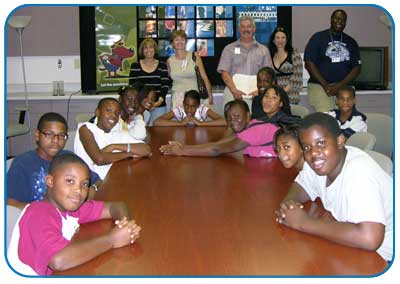New Year’s Resolution: Inner-City Pensacola Gets in Shape

February 4, 2009
The new year offers a new opportunity for the Health Solutions Team—a collaboration of West Florida groups—to find ways to lower the growing percentage of overweight children in Escambia County, FL, especially inner-city Pensacola.
According to the Escambia County Health Department, some 30 percent of Escambia’s children are overweight. The team was formed three years ago to find ways to address this problem, particularly high BMI rates among children in 1st through 9th grades.
After much strategic planning and intensive research, the group chose We Can!® because of its science-based approach and multiple curricula, and became an Intensive Community Site in June 2008.

Team members include the Escambia County Health Department, the University of West Florida, the Pensacola Parks and Recreation Department, the West Florida Planning Council, and the Community Traffic and Safety Team.
“We have a vision of greater community where healthy lifestyle choices, better nutrition, and increased physical activity are the norm, not the exception,” said Sandy DiNatalie, health educator consultant for the Health Promotions Department in the Escambia County Health Department. “We Can! is already helping us reach our goal of reducing the number of overweight children in Escambia County from 30% to 20% by the year 2020.”
Since June, the team has already run three Media-Smart Youth® programs through the Pensacola Parks and Recreation Department’s community centers. The two primary centers, the Fricker Community Center and the E.S. Cobb Community Center, have great facilities for the curriculum.
They also provide in-kind donations in the form of snacks for the kids. Big strides have been taken at the Cobb Center outside of the classes, too. It has changed its menu to offer kids a variety of healthy snacks, having previously served only limited options.
As part of the Media-Smart Youth curriculum, kids also have to record a Public Service Announcement (PSA). They use the University of West Florida’s radio station for the project.
“The kids are so excited about the program that some of the ‘alumni’ from the first program came back and helped students in the second program put together their PSA,” said DiNatalie.
DiNatalie says she hopes that this enthusiasm continues, and is looking for other partners in her community and beyond to help increase what she calls a “ripple effect.” She’s also seeking a way to provide more food and on-site child care, in order to entice a greater number of parents to participate in future We Can! programming.










